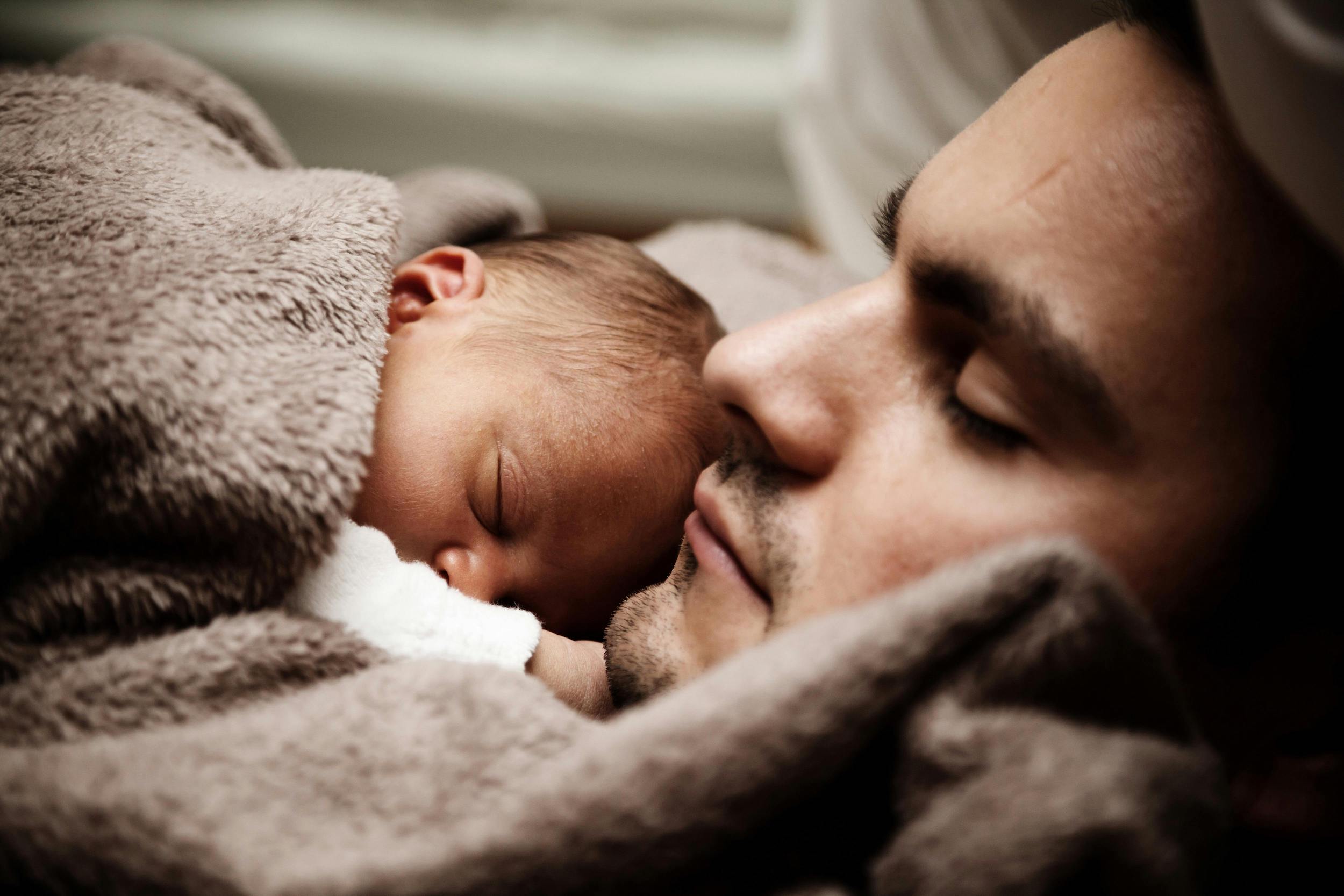
11 Mar Create Positive Sleep Habits in Your Baby
One of the most challenging aspects of motherhood is sleep deprivation. Every baby is different. Some babies are great sleepers, and without much effort, they “sleep through the night” a few weeks after birth. Other babies need a more deliberate approach to shape their sleep habits into a day/night cycle that is survivable by their parents. This requires knowledge of how to create positive sleep habits in babies, plus a good amount of patience and consistency.
In the first few weeks of life, newborns don’t have a set number of hours they sleep during the day or night. Because they need to feed every 2-3 hours in those first few weeks, they should not be allowed to sleep for more than 5 hours at a time, without waking them to feed.
After those first few weeks, you’ll want to think about establishing a sleep routine for your baby. In general, babies aged 1-3 months old will sleep 8-9 hrs at night, waking only to feed. From 6-12 months, they’ll sleep 10-12 hours, often through the night. They’ll nap 5 hours during the daytime as well. A 2 year old will sleep 10-12 hours during the night and 4 hours during the day. A 3 year old will sleep 10 hours at night and 4 hours during the day. By age 4-6 years old, a child will sleep 10 hours at night and may not need a daytime nap.
For some mothers, they’re surprised to learn that a baby under a year old could be sleeping up to 17 hrs a day! This is because the first year is a period of rapid physical growth and development and much of this happens during sleep. But, if you’re at your wits end with your baby’s erratic and unreliable sleep cycle, let’s take a closer look at this.
The foundation of positive sleep habits in babies starts here:
- Create a calming routine that is consistent. Whether this routine is for daytime naps or nighttime sleep, it can include a warm bath, cuddling, rocking, singing, reading, or quiet music. Keep the room dimly lit. (Some mothers use blackout curtains and white noise machines too.)
- Lay your baby down when she is drowsy, but awake. This ensures she can learn to fall asleep on her own.
- Consider using a pacifier. Some studies suggest this helps to reduce the risk of SIDS (Sudden Infant Death Syndrome).
- If your baby wakes during the night, allow him time to settle down again. If he continues to fuss, check on him, comfort him with soothing words and calm movements, and then leave.
Situations to avoid:
- Exposure to the TV, smart phones, ipads and computers before bedtime. The flashing light is overstimulating.
- Putting your baby to sleep with a bottle as this increases the likelihood of tooth decay and ear infections.
- Putting your baby to sleep in a car seat or swing (for routine naps) as this curved position is not optimal for breathing.
- Cosleeping. Babies can suffocate from bed sheets, loose blankets, becoming wedged between the mattress and headboard or wall, and from parents accidently covering their airway during sleep. Share your bedroom not your bed.
The safest way to put your baby to sleep is on her back in a bedside cot or a crib in your bedroom, without stuffies or blankets. Swaddling is safe for newborns who cannot roll over. When your baby can roll over, a cotton sleep sack is a safe alternative. Learn more about safe sleep for infants.
Now that you’ve got the basics of creating positive sleep habits in your baby, keep an eye out for cues that your baby is tired. Putting your baby to sleep will be easier if his melatonin is peaking. You’ll know this when you see your baby rubbing his eyes, yawning, fussing, being still, or staring into space. This is your optimal window to put your baby down to sleep. Visit Mommyato for more information on newborn sleep schedules.
Remember, with any new routine, patience and consistency is key. But the basic formula is tried and true: Tired baby + Positive Sleep Habits = Success!
REFERENCES:
- American Academy of Pediatrics. 2023. Safe sleep. https://www.aap.org/en/patient-care/safe-sleep/
- Centers for Disease Control. June 2022. Helping babies sleep safely. https://www.cdc.gov/reproductivehealth/features/baby-safe-sleep/
- Photo by Pixabay: Close Up Of A Dad And His Little Baby Sleeping Together. https://www.pexels.com/photo/close-up-of-a-dad-and-his-little-baby-sleeping-together-2133/



